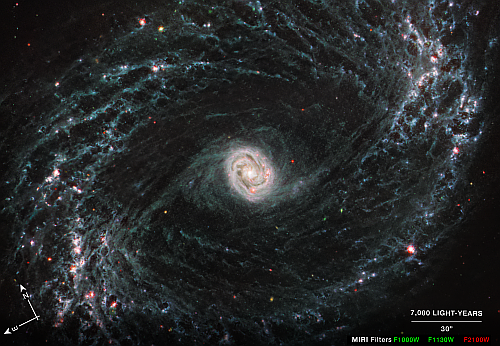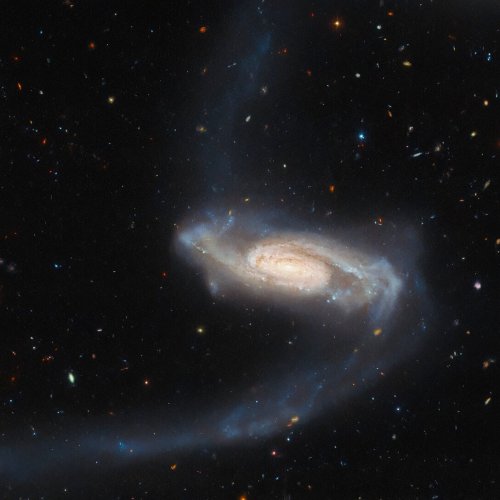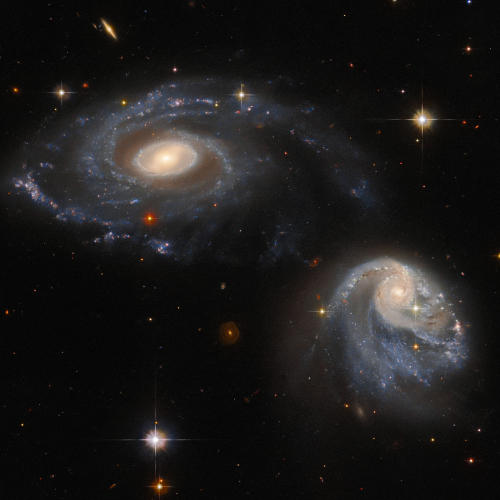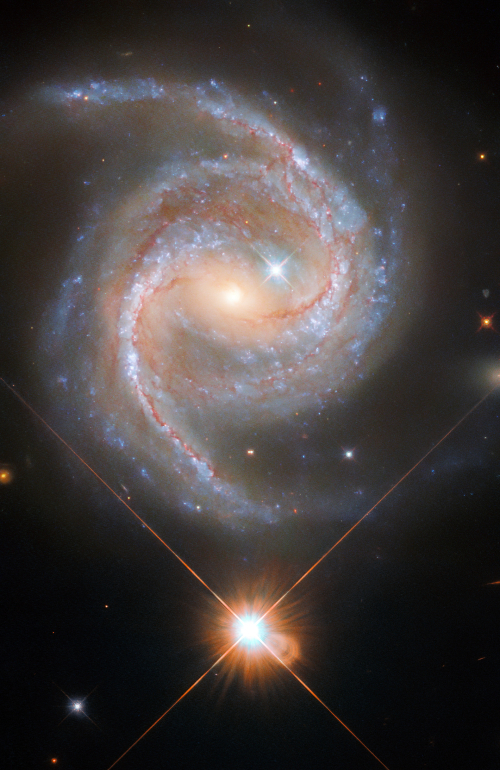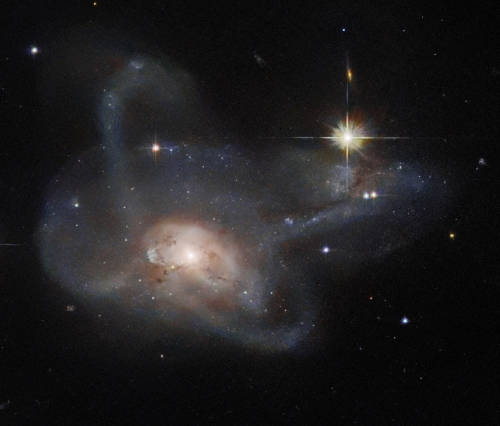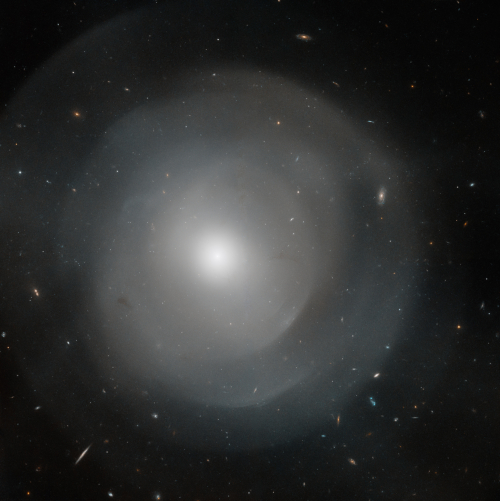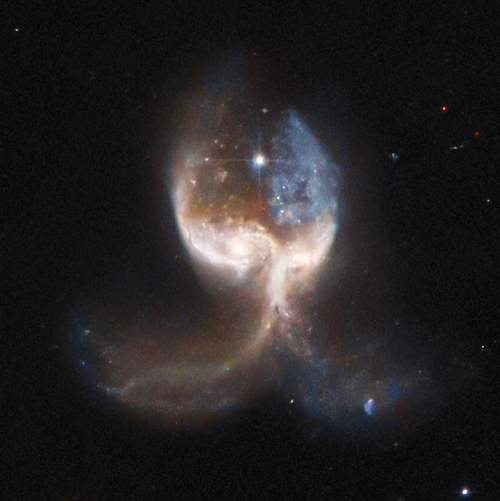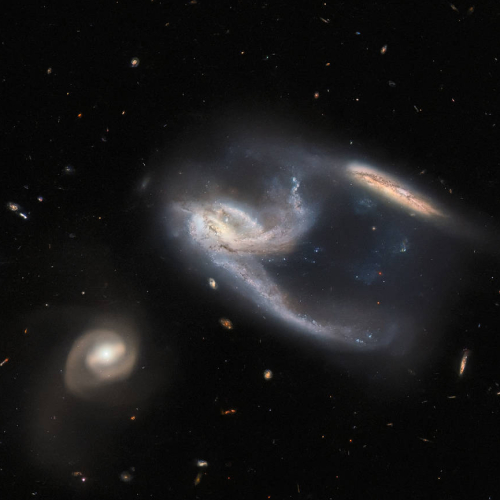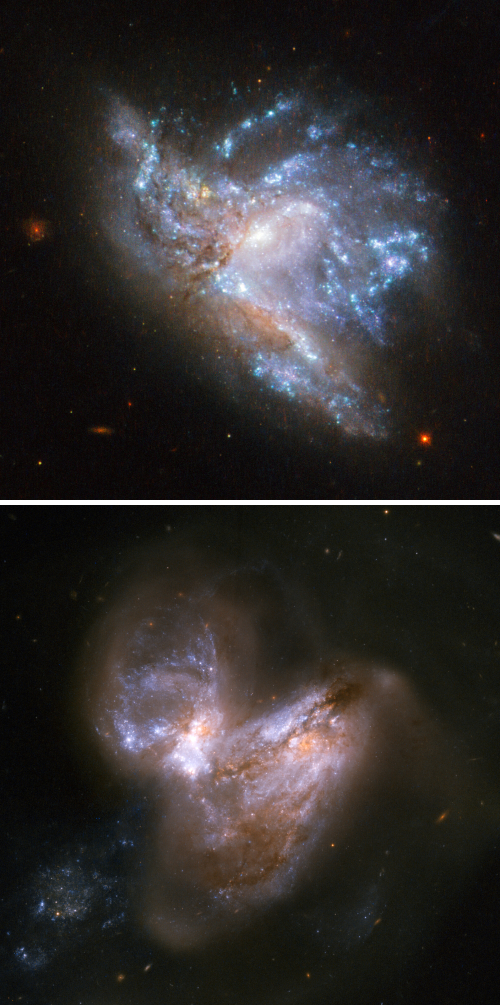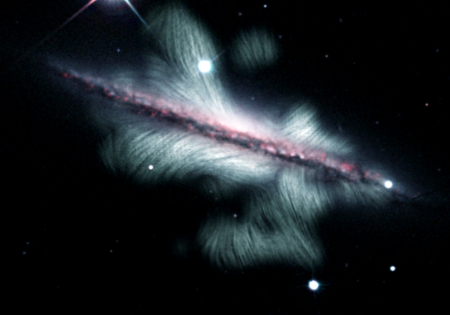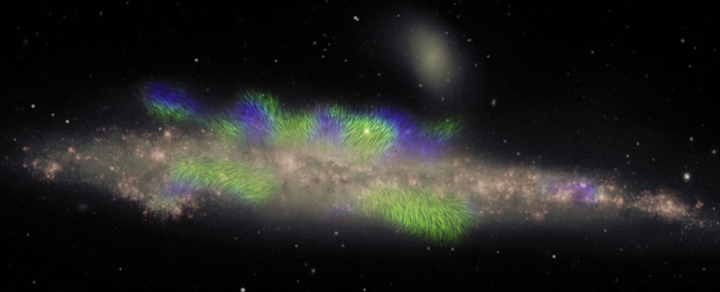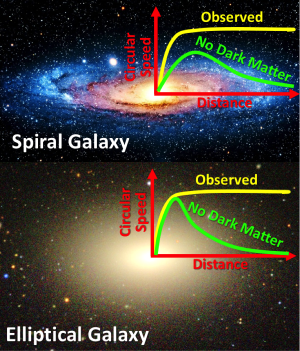A confused spiral galaxy
Cool image time! The picture to the right, cropped and reduced to post here, was taken by the Hubble Space Telescope and released today. From the caption:
The irregular spiral galaxy NGC 5486 hangs against a background of dim, distant galaxies in this image from the NASA/ESA Hubble Space Telescope. The tenuous disc of the galaxy is threaded through with pink wisps of star formation, which stand out from the diffuse glow of the galaxy’s bright core. While this particular galaxy has indistinct, meandering spiral arms it lies close to the much larger Pinwheel Galaxy, one of the best known examples of ‘grand design’ spiral galaxies with prominent and well-defined spiral arms. In 2006 Hubble captured an image of the Pinwheel Galaxy which was — at the time — the largest and most detailed photo of a spiral galaxy ever taken with Hubble.
This galaxy is defined I think as an irregular spiral because if you look close, you can see a very faint hint of a central bar and two large arms spiraling away at its ends. It is faint however, and might simply be caused by the human mind’s natural desire to see patterns. To my eye this galaxy could just as well be a patchy elliptical galaxy, with no arms at all.
Cool image time! The picture to the right, cropped and reduced to post here, was taken by the Hubble Space Telescope and released today. From the caption:
The irregular spiral galaxy NGC 5486 hangs against a background of dim, distant galaxies in this image from the NASA/ESA Hubble Space Telescope. The tenuous disc of the galaxy is threaded through with pink wisps of star formation, which stand out from the diffuse glow of the galaxy’s bright core. While this particular galaxy has indistinct, meandering spiral arms it lies close to the much larger Pinwheel Galaxy, one of the best known examples of ‘grand design’ spiral galaxies with prominent and well-defined spiral arms. In 2006 Hubble captured an image of the Pinwheel Galaxy which was — at the time — the largest and most detailed photo of a spiral galaxy ever taken with Hubble.
This galaxy is defined I think as an irregular spiral because if you look close, you can see a very faint hint of a central bar and two large arms spiraling away at its ends. It is faint however, and might simply be caused by the human mind’s natural desire to see patterns. To my eye this galaxy could just as well be a patchy elliptical galaxy, with no arms at all.



